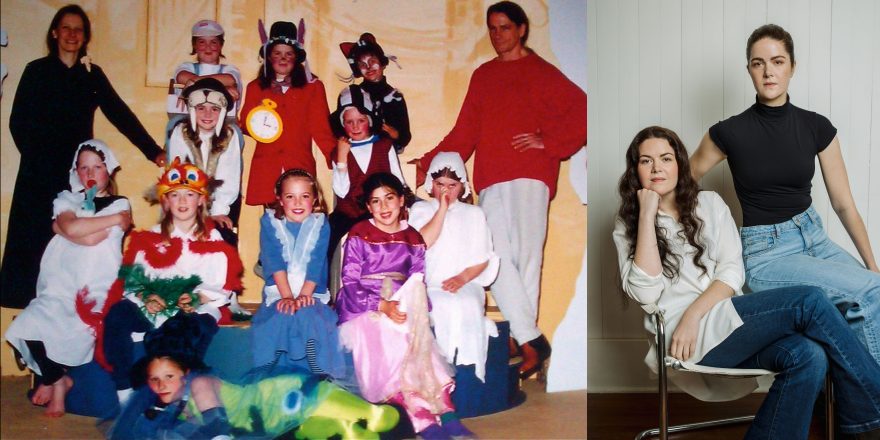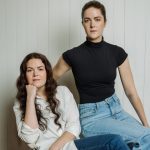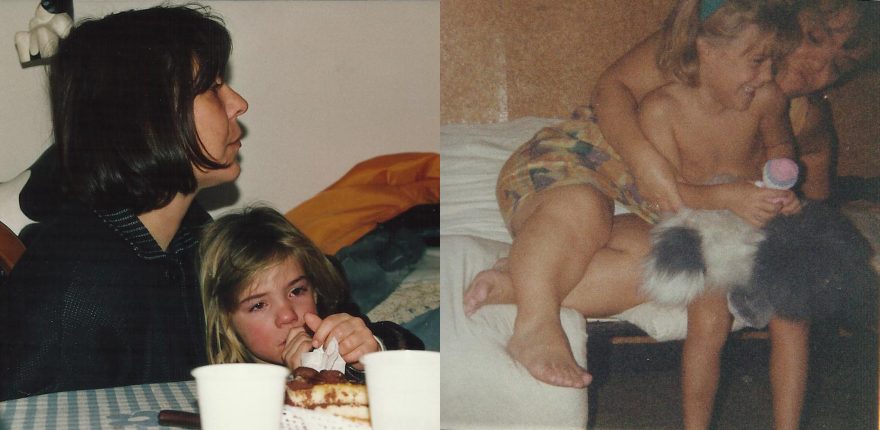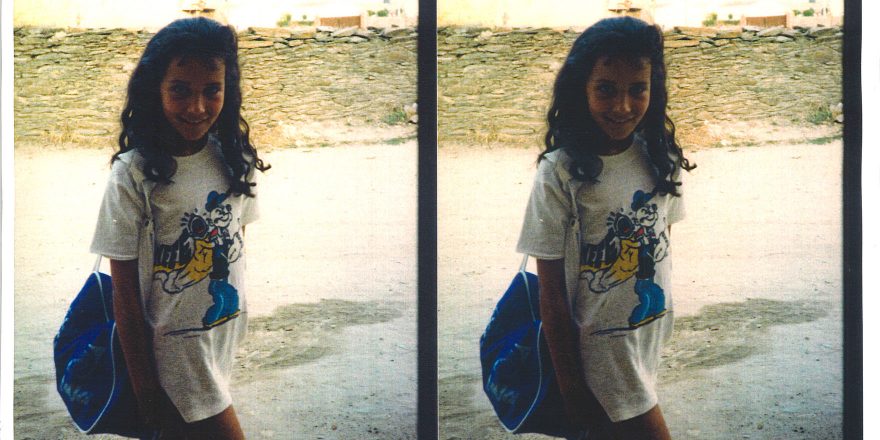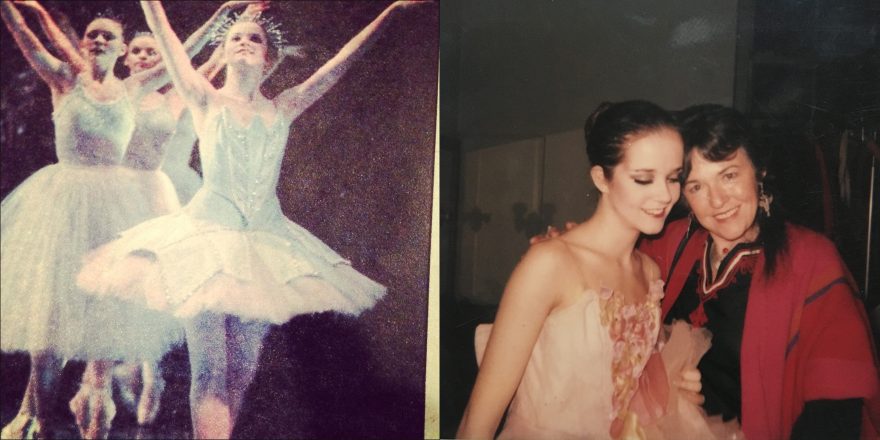We’ve always loved stories.
Our parents would read us bedtime stories most nights when we were small. We especially loved listening to fantasy books like The Chronicles of Narnia, The Hobbit, Peter Pan, Rosemary Sutcliff’s adaptations of The Odyssey and The Iliad, and Over Sea, Under Stone. We also loved watching films: The Secret of Roan Inish, The Little Princess, The Secret Garden, Heidi. These stories introduced us to wonderful characters, allowed us to explore whole new worlds and inspired us to start imagining our own.
We grew up on a small island, Nex̱wlélex̱wm (Bowen Island), off the west coast of Canada. The forests and seaside were a perfect place to let our imaginations run wild. As children, we spent hours creating elaborate scenarios where we were lost children fending for ourselves in the wild, where we hopped between pools in C.S. Lewis’ woods between the worlds, where we were selkies trying to find our coats, and where fairies needed help setting up their tea parties and balls.
Our dad started reading Shakespeare plays to us when we were about five years old, starting with A Midsummer Night’s Dream. Though it sounded different than the stories we were used to, we accepted it as a bedtime story because it had fairies in it. After that came Twelfth Night. We are twins, and the idea that there was a story about twins was thrilling to us. Our dad would read the dialogue and then follow it up with his own translation, so we could better understand what was happening. We fell in love with these plays.
Then came actually seeing a play.
There was no formal theatre on the island at that time, so the play was put on in a big tent on the community field. Sitting in the audience and watching the tale of Peter Pan unfold before us, we were immediately captivated. Here was a story we loved being brought to life before our eyes. And children were a part of it! It was then we realized we could actually be a part of the stories we loved. We thought, if those children could be fairies in Peter Pan, maybe one day we could be fairies in A Midsummer Night’s Dream.
We were both known as quiet kids who were scared of quite a lot of things, so it must’ve been a big surprise to our parents when we told them we wanted to be in a play.
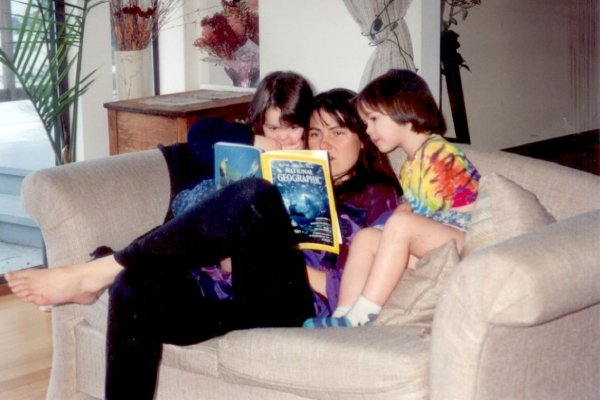
There was, and still is, a small theatre school on Bowen Island: Tir-na-nOg Theatre School. It’s been run by an amazing couple, Jack Headley and Julie Tetzner, since 1988. We first started classes at the school when we were in second grade. The first play we got to take part in was The Lion, the Witch and the Wardrobe. We were thrilled! It was a story we knew well, and we were so excited to be able to play within the world of Narnia.
At that time, Tir-na-nOg didn’t have a dedicated space, so we had our classes in a barn. We’d get on the bus after school and then be dropped off at the end of a dirt driveway. We’d walk up to the barn, or, if we were lucky, Jack would be waiting for us in his brown pick-up truck and we’d hop in the back for a ride up the hill. Then we’d do our classes, a mix of acting exercises and rehearsing for the play.
Through acting exercises (that really just felt like fun games when we were young), Jack and Julie helped us cultivate and express our imagination. One exercise involved us students exploring the woods of Narnia. One by one, each student was to move through the empty space of the barn, imagine the woods and communicate, without words, a specific part of the woods they discovered. Someone would crouch to feel the cold snow on the ground, someone else discovered a tall tree and ran their hand over its rough bark, someone else would fall into a stream. When it came to each person’s turn, we all needed to remember what the others had discovered when they took their walk. We needed to be aware of the snow under our feet, the tree to step around and the stream to leap over. By the time everyone walked the space, we were all able to walk the woods together and see the same thing around them.
Exercises like this not only helped us hone and communicate our own individual imaginations, but they also helped us learn to work together in creating and expressing a collective vision.
We performed The Lion, the Witch and the Wardrobe in a hall at a camp that was at the end of a very long, very rocky and very steep driveway. We were thrilled when Jack and Julie placed some wooden cutouts of trees on the stage where we had placed them in our woods-exploration exercise. We saw our imagination being physically realized.
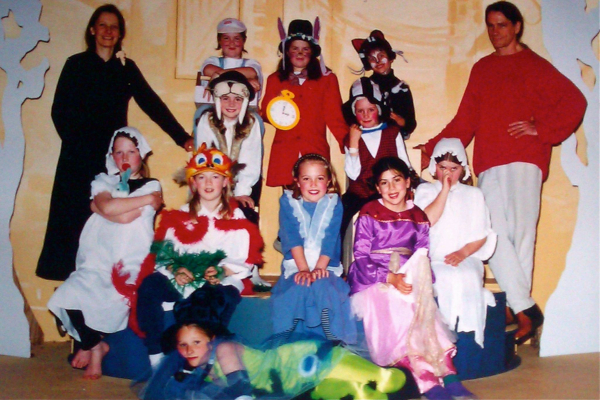
We didn’t have fancy costumes or set pieces. But that didn’t matter. We learned the important thing was what we did with what we had. If we put on a wolf mask, snarled and snapped, the audience would understand we were terrifying wolves. If we truly saw the painted plywood to be a grand sleigh made of ice, then the audience would see it too.
Now, when it came close to performing, some of us were a bit shaky with the memorization of our lines. Jack sat us all down and, very seriously, told us that if we didn’t lock down our lines, the play would be cancelled. We had a responsibility to each other to be ready and committed to our part in the play. If one of us dropped the ball, the integrity of the story would crumble and we would let our audience down. We had a responsibility to them.
Jack and Julie always remained adamant that the audience never take photos during performances. They sometimes had a photographer come for archival purposes, but otherwise, the theatre was a no-camera zone. Many children (and parents) didn’t really understand the reason behind this.
But Jack and Julie always talked about the special thing that happened in the space somewhere between the performers and the audience. That thing, that was theatre. That was the play. If you were distracted by worrying about snapping a picture, you’d miss it. And if you did get a photo, it wouldn’t be of the play. Not really.
Our wee brains couldn’t quite grasp that concept when we were small. For us, it felt like the play was what was happening with us onstage. It would take time to understand what Jack and Julie meant.
We kept doing theatre with Tir-na-nOg for many years. When we got older, we even fulfilled our dream of taking part in Shakespeare plays. They taught us many things along the way, including to always play comedy with a deadly seriousness, and tragedy with a light touch. And to never forget that plays are called “plays,” and must be played with.
For a time, we thought we would grow up to work in theatre.
Then, The Lord of the Rings came out.
When people ask us when we knew we wanted to be filmmakers, we can answer without a second thought: when we saw the DVD special features of The Fellowship of the Ring.
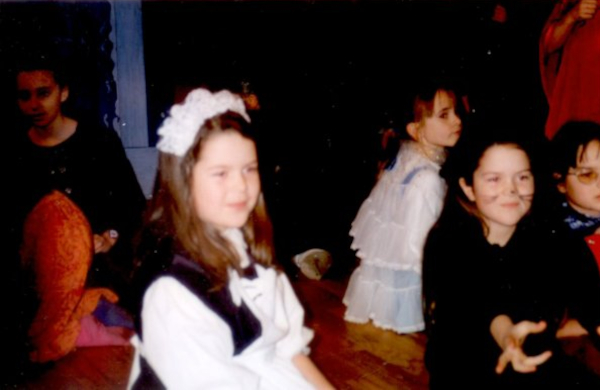
From the moment we first saw the trailer for Peter Jackson’s The Lord of the Rings on a VHS of Spy Kids, we were captivated. We quickly rewound it, dragged our parents over to watch it and announced we would need to go and see it. As there was no cinema on Bowen, going to see a movie was always a big excursion, since it meant having to take the ferry off island and driving to the nearest movie theater. But for The Lord of the Rings, we were definitely going to make the journey. As soon as we saw the film, it grabbed hold of us and captured our hearts with its scope and depth of feeling. It was magic.
Then, the DVD special extended edition was released. Along with the film came hours of documentary-style features and commentaries detailing how the film was made. We watched all of it, then rewatched, and rewatched. When The Two Towers and The Return of the King came out, we did the same thing.
Before this, we had always loved films, but the idea that we might be able to create one ourselves was unfathomable. Watching these special features demystified the process of making a film. Even though the scale of this kind of storytelling was so much bigger than what we knew from our little island theatre school, somehow it felt very familiar.
We saw people coming together and working hard to tell a story. There was a script, actors, costumes, make-up and lights – things we were familiar with – but there were new elements as well: we learned about sound design, foley, cinematography, miniature building, VFX, stunt doubles … all the other things that could be used to help tell a story. Adding each new element felt almost like a grander scale version of adding those wooden trees that Jack and Julie had placed onstage for Narnia. They were exciting new pieces to be used to bring the story to life.
We watched in awe and admiration as Peter Jackson wove these storytelling pieces together to create the magic that we experienced while watching the film. We wanted to be like him. We wanted to create magic.
As we have continued on to be filmmakers, we have carried the lessons Jack and Julie taught us about being storytellers with us.
And we understand now what Jack and Julie were trying to tell us about that special place where the play, or the story, really lives – in that intangible space, floating somewhere between the stage and the audience.
You see, if we were to look at a photo of that production of Peter Pan we saw as children, we might see an actor dressed in fake green leaves standing on a stage, the back of a white tent behind them, with their hands stretched into the air. However, in that moment in the play, a boy called Peter Pan, with clothes made of leaves from Neverland, was flying around a nursery room chasing his shadow.
In film, this place also exists between the screen and the audience.
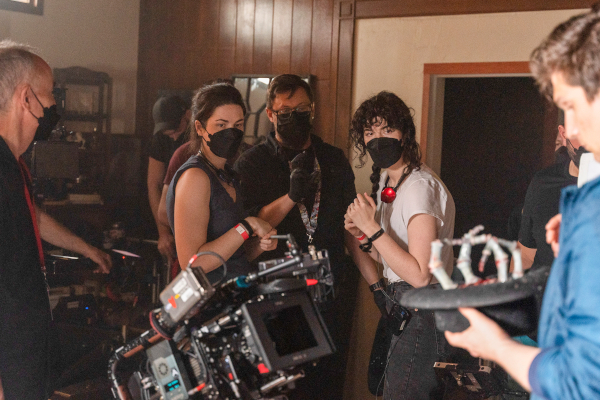
We’ve found that the greater the talent of the storytellers (writers, directors, actors, costume designers, etc. – everyone involved in the telling), the more easily the audience can be drawn to this place in between.
Somewhere between a screen showing an actor called Elijah Wood in a studio set holding a prop ring and the audience watching from their theatre seats, there exists a home called Bag End where a young hobbit named Frodo Baggins has just been tasked with taking the one ring on a grand adventure across Middle Earth.
A play, or a film, we’ve learned, is really a relationship between storytellers and audience.
The story, the magic, exists in that special place where the work of the storytellers and the imagination of the audience collide.
Featured image shows (left) the Spear Sisters in a late 1990s production of Alice in Wonderland and (right) the Spear Sisters today, as photographed by Kristine Cofsky. All images courtesy the Spear Sisters, unless otherwise stated.



